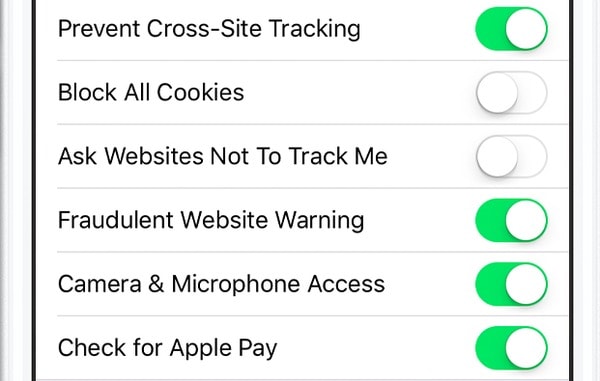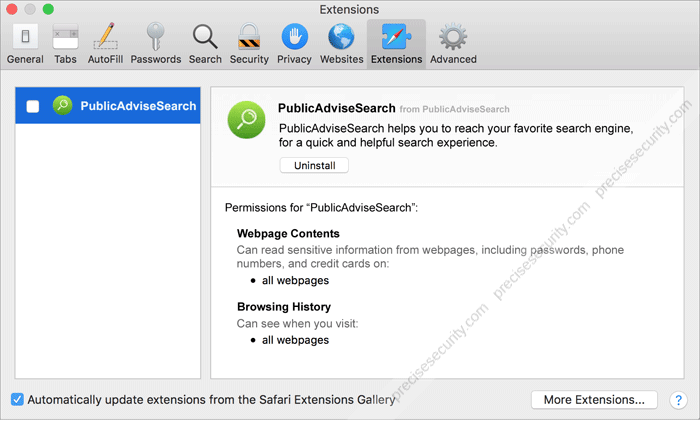How to remove Mac Auto Fixer from Mac?
What is Mac Auto Fixer?
Oct 09, 2018 Afterward, Advanced Mac Cleaner shows a reasonably convincing, but fake variant of the normal OS X dialog message box which says that no suitable app is installed. The fake message box links to the official Advanced Mac Cleaner website, owned by PCVARK, which tries to install Mac Adware Remover or similar applications to Advanced Mac Cleaner. Oct 10, 2019 Download Advanced Mac Cleaner Removal Tool for Mac Download Combo Cleaner. To remove Advanced Mac Cleaner completely, we recommend you to use Combo Cleaner. It can help you remove files, folders and registry keys of Advanced Mac Cleaner and uninstall hijackers, toolbars and unwanted add-ons from the Safari browser.
Mac Auto Fixer is a potentially unwanted application similar to Advanced Mac Cleaner, Mac Tonic, and Mac Mechanic. Developers of this application use a deceptive marketing method called 'bundling' to proliferate this software. Mac Auto Fixer installs commonly installs on users' computers without their consent. When browsing the internet, they are presented with a pop-up ad stating that they need to update Flash player, or that their Mac is infected with 3 viruses. These pop-ups are designed to trick users into downloading and installing the Mac Auto Fixer potentially unwanted application.
Mac Auto Fixer starts automatically on each system startup and performs a computer scan. After a quick scan, Mac users are presented with a list of errors (security, smart scan, and privacy-related). If the user clicks the 'Fix all items' button, they are asked to pay 118 Euros for a 2-year license. While it is hard to determine if the scan results are legitimate, the way in which this program is installed on computers is cause for concern. You should not trust or purchase this potentially unwanted application. Note that, in many cases, deceptive Flash Player (and other free software) installers are used to distribute this unwanted application, and they also promote browser hijackers (for example weknow.ac, anysearchmanager, safefinder, etc.) and adware (for example MyCouponize) infections. Thus, apart from seeing Mac Auto Fixer pop-ups with dubious scan results, users are also redirected to unwanted websites and experience rogue ads when browsing the Internet.
| Name | Mac Auto Fixer virus |
| Threat Type | Mac malware, Mac virus |
| Detection Names | Avast (MacOS:AMC-DK [PUP]), Avira (PUA/OSX.GT32SupportGeeks.hflsn), BitDefender (Adware.MAC.Generic.12496), ESET-NOD32 (a variant of OSX/GT32SupportGeeks.B potentially unwanted), Full List (VirusTotal) |
| Symptoms | Your Mac became slower than normal, you see unwanted pop-up ads, you get redirected to shady websites. |
| Distribution methods | Deceptive pop-up ads, free software installers (bundling), fake flash player installers, torrent file downloads. |
| Damage | Internet browsing tracking (potential privacy issues), displaying of unwanted ads, redirects to shady websites, loss of private information. |
| Removal | To eliminate Mac Auto Fixer virus our malware researchers recommend scanning your computer with Combo Cleaner. |
Today, there are many potentially unwanted applications that use the bundling marketing method to install on systems. Their main task is to infiltrate Macs, perform dubious system scans, and display a large list of errors, thus tricking computer users into purchasing their license key to eliminate the supposedly-detected issues. If you see Mac Auto Fixer on your computer, ignore any system scans and error pop-ups. Remove this software from your Mac.
How did Mac Auto Fixer install on my computer?
Mac Auto Fixer is distributed using a marketing method called bundling. Deceptive free software installers are created to hide additional software installation within them. For example, Mac users browsing the Internet are presented with a rogue pop-up ad that suggest download of a Flash Player update - it states that the current version is outdated (this is the first part of the scam), and users who believe it, go on to download the Flash Player installation file. After launching the installer, many users tend to rush through installation steps by clicking the 'next' button without paying much attention to the installation steps. This is the second part of the scam - the modified Flash player installer hides additional software installation within the options (commonly called 'advanced' or 'custom'). Rather than installing a Flash Player update, this situation leads to installation of various potentially unwanted applications, browser hijackers, and adware.
How to avoid installation of potentially unwanted applications?
The best way to avoid installation of potentially unwanted applications, including Mac Auto Fixer, is to pay close attention to all software installation steps. When installing free. software downloaded from the Internet, it is very important to inspect each installation step. Clicking the advanced or custom installation options can reveal various options to uncheck installation of additional (commonly, unwanted) applications. Also, to avoid installation of unwanted applications, do not trust Internet pop-ups that inform you of computer infections or out-dated software. If you experience 'Your Mac is infected' pop-ups, bear in mind that there is no way for a website to detect if your Mac is infected. The 'Update your Flash Player' pop-ups are mostly fake. You should download Flash Player and other free software from developers' websites only. If your Mac is already infected with Mac Auto Fixer, we recommend running a scan withCombo Cleaner Antivirus for macOS to automatically eliminate this potentially unwanted application.
Official website of Mac Auto Fixer unwanted application:
Mac Auto Fixer unwanted application installation setup:
Fake 'Your Mac in infected' pop-up promoting installation of this unwanted application:
IMPORTANT NOTE! Mac Auto Fixer adds itself to the list of applications that automatically run upon each user log in. Therefore, before commencing, perform these steps:
- Go to System Preferences -> Users & Groups.
- Click your account (also known as Current User).
- Click Login Items.
- Look for the 'Mac Auto Fixer' entry. Select it, and click the '-' button to remove it.
Instant automatic removal of Mac Auto Fixer virus:Manual threat removal might be a lengthy and complicated process that requires advanced computer skills. Combo Cleaner is a professional automatic malware removal tool that is recommended to get rid of Mac Auto Fixer virus. Download it by clicking the button below:
▼ DOWNLOAD Combo Cleaner for MacBy downloading any software listed on this website you agree to our Privacy Policy and Terms of Use. Free scanner checks if your computer is infected. To remove malware, you have to purchase the full version of Combo Cleaner.
Quick menu:

- STEP 1. Remove Mac Auto Fixer related files and folders from OSX.
- STEP 2. Remove adware from Safari.
- STEP 3. Remove adware from Google Chrome.
- STEP 4. Remove adware from Mozilla Firefox.
Video showing how to remove adware and browser hijackers from a Mac computer:
Mac Auto Fixer unwanted application removal:
Remove Mac Auto Fixer-related potentially unwanted applications from your 'Applications' folder:
Click the Finder icon. In the Finder window, select “Applications”. In the applications folder, look for “MPlayerX”,“NicePlayer”, or other suspicious applications and drag them to the Trash. After removing the potentially unwanted application(s) that cause online ads, scan your Mac for any remaining unwanted components.
Free scanner checks if your computer is infected. To remove malware, you have to purchase the full version of Combo Cleaner.
Remove mac auto fixer virus related files and folders:
Click the Finder icon, from the menu bar. Choose Go, and click Go to Folder...
Check for adware-generated files in the /Library/LaunchAgents folder:
In the Go to Folder... bar, type: /Library/LaunchAgents
In the “LaunchAgents” folder, look for any recently-added suspicious files and move them to the Trash. Examples of files generated by adware - “installmac.AppRemoval.plist”, “myppes.download.plist”, “mykotlerino.ltvbit.plist”, “kuklorest.update.plist”, etc. Adware commonly installs several files with the same string.
Check for adware generated files in the /Library/Application Support folder:
In the Go to Folder... bar, type: /Library/Application Support
In the “Application Support” folder, look for any recently-added suspicious folders. For example, “MplayerX” or “NicePlayer”, and move these folders to the Trash.
Check for adware-generated files in the ~/Library/LaunchAgents folder:
In the Go to Folder bar, type: ~/Library/LaunchAgents
In the “LaunchAgents” folder, look for any recently-added suspicious files and move them to the Trash. Examples of files generated by adware - “installmac.AppRemoval.plist”, “myppes.download.plist”, “mykotlerino.ltvbit.plist”, “kuklorest.update.plist”, etc. Adware commonly installs several files with the same string.
Check for adware-generated files in the /Library/LaunchDaemons folder:
In the Go to Folder... bar, type: /Library/LaunchDaemons
In the “LaunchDaemons” folder, look for recently-added suspicious files. For example “com.aoudad.net-preferences.plist”, “com.myppes.net-preferences.plist”, 'com.kuklorest.net-preferences.plist”, “com.avickUpd.plist”, etc., and move them to the Trash.
Scan your Mac with Combo Cleaner:
If you have followed all the steps in the correct order you Mac should be clean of infections. To be sure your system is not infected run a scan with Combo Cleaner Antivirus. Download it HERE. After downloading the file double click combocleaner.dmg installer, in the opened window drag and drop Combo Cleaner icon on top of the Applications icon. Now open your launchpad and click on the Combo Cleaner icon. Wait until Combo Cleaner updates it's virus definition database and click 'Start Combo Scan' button.
Combo Cleaner will scan your Mac for malware infections. If the antivirus scan displays 'no threats found' - this means that you can continue with the removal guide, otherwise it's recommended to remove any found infections before continuing.
After removing files and folders generated by the adware, continue to remove rogue extensions from your Internet browsers.
Mac Auto Fixer virus removal from Internet browsers:
Remove malicious extensions from Safari:
Can T Delete Advanced Mac Cleaner
Remove mac auto fixer virus related Safari extensions:
Open Safari browser, from the menu bar, select 'Safari' and click 'Preferences...'.
In the preferences window, select 'Extensions' and look for any recently-installed suspicious extensions. When located, click the 'Uninstall' button next to it/them. Note that you can safely uninstall all extensions from your Safari browser - none are crucial for normal browser operation.
- If you continue to have problems with browser redirects and unwanted advertisements - Reset Safari.
Remove malicious plug-ins from Mozilla Firefox:
Remove mac auto fixer virus related Mozilla Firefox add-ons:
Open your Mozilla Firefox browser. At the top right corner of the screen, click the 'Open Menu' (three horizontal lines) button. From the opened menu, choose 'Add-ons'.
Choose the 'Extensions' tab and look for any recently-installed suspicious add-ons. When located, click the 'Remove' button next to it/them. Note that you can safely uninstall all extensions from your Mozilla Firefox browser - none are crucial for normal browser operation.
- If you continue to have problems with browser redirects and unwanted advertisements - Reset Mozilla Firefox.
Remove malicious extensions from Google Chrome:
Remove mac auto fixer virus related Google Chrome add-ons:
How To Delete Mac Cleaner
Open Google Chrome and click the 'Chrome menu' (three horizontal lines) button located in the top-right corner of the browser window. From the drop-down menu, choose 'More Tools' and select 'Extensions'.
In the 'Extensions' window, look for any recently-installed suspicious add-ons. When located, click the 'Trash' button next to it/them. Note that you can safely uninstall all extensions from your Google Chrome browser - none are crucial for normal browser operation.

- If you continue to have problems with browser redirects and unwanted advertisements - Reset Google Chrome.